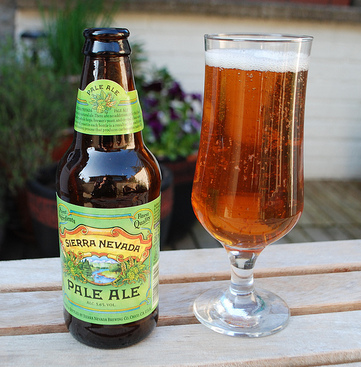Mastering the Craft of Purification: a Deep Dive Into Distillery Traditions
Exploring the complex art of purification unveils a world steeped in classic traditions that have shaped the spirits we take pleasure in today. From the ancient origins of purification techniques to the modern-day advancement of distillery equipment, each action in the process brings with it an abundant tapestry of background and expertise. As we delve right into the delicate balance of modern versus conventional distilling practices and discover the relevance of vital ingredients, a deeper understanding arises of the extensive impact distillery customs have on the spirits we relish.
Origins of Purification Techniques
The advancement of purification strategies has a rich history that traces back to ancient civilizations. The principle of separating elements based on their different boiling points laid the foundation for the innovative distillation processes we have today.
The earliest proof of purification days back to around 3000 BC in Mesopotamia, where clay pots were used to boil down fragrances and fragrant oils. The Egyptians further progressed these strategies, making use of distillation for medical functions and embalming practices. The Greeks, notably figures like Aristotle and Hippocrates, contributed to the academic understanding of purification.
In time, purification infect areas like India, China, and the Middle East, each culture including its one-of-a-kind touch to the craft. The evolution of purification methods continued through the Middle Ages and the Renaissance, eventually resulting in the varied selection of purification processes utilized in modern distilleries worldwide.
Evolution of Distillery Equipment
/https://static.texastribune.org/media/files/ad5ab7b80fc5f2bd06df97dde9a096d4/01%20Beer%20to%20go%20SF%20TT.jpg)
With improvements in modern technology and a deeper understanding of the distillation procedure, modern distilleries currently utilize a selection of innovative tools to produce spirits of the highest quality. Today, distillation devices consists of column stills, reflux stills, and hybrid stills, each created to accommodate details purification needs. These contemporary stills offer far better temperature guideline, raised purification precision, and better efficiency in separating alcohol from pollutants.
In enhancement to stills, distilleries now utilize innovative condensers, fermenters, and purification systems to additional fine-tune the extract. The advancement of distillery equipment remains to play an essential role fit the diverse variety of spirits available out there today.
Standard Vs. Modern Distilling Practices
Conversely, contemporary distilling techniques leverage cutting-edge innovation and innovation to simplify production procedures and improve uniformity. Automated systems, computerized controls, and advanced anonymous devices make it possible for modern-day distilleries to create spirits much more effectively and with better precision.
While traditional distilling techniques are valued for their heritage and the unique tastes they generate, modern-day methods provide benefits in regards to scalability, quality assurance, and sustainability. By integrating scientific innovations and modern-day engineering, distillers can maximize manufacturing, reduce waste, and fulfill the needs these days's market extra efficiently. Inevitably, the choice in between modern and standard distilling practices typically depends on the distillery's goals, worths, and target market.
Trick Active Ingredients in Distillation Process
Within the craft of purification, the selection of essential ingredients plays an essential function in determining the flavor account and high quality of the spirits produced. The main components used in the distillation process are commonly water, yeast, and a fermentable source such as grains, fruits, or sugarcane.
Water is an essential element as it not only thins down the alcohol material to a palatable level yet likewise affects the overall mouthfeel and structure of the spirit. The quality and mineral content of the water used can dramatically affect the final other product.
Yeast is one more crucial ingredient that converts the sugars existing in the fermentable resource into alcohol with the procedure of fermentation. Different strains of yeast can create varying tastes and fragrances, adding to the one-of-a-kind features of the spirit.

Impact of Distillery Traditions on Spirits
The influence of historical distillery customs on spirits extends beyond the selection of key components, forming the really essence and character of the final distilled products (Breweries in Galveston Texas). These customs, passed down via generations, play an important duty in defining the one-of-a-kind taste accounts and high qualities that differentiate one spirit from an additional
Distillery customs incorporate a vast array of methods, from the certain techniques used in distillation to the choice of aging procedures used. The usage of standard copper pot stills in whiskey manufacturing is thought to give particular tastes and attributes that are highly valued by lovers. The aging of spirits explanation in oak barrels, a method deeply rooted in distilling customs, adds to the development of intricate scents and flavors over time.

Final Thought
From the beginnings of purification strategies to the modern-day methods, the effect of distillery customs on spirits is undeniable. Distillery traditions play an important duty in forming the spirits market and preserving the heritage of distillation methods.
Throughout the background of distillation, the tools utilized in distilleries has undertaken substantial evolution to improve performance and quality of the purification process.With developments in technology and a much deeper understanding of the purification procedure, modern-day distilleries currently use a variety of innovative devices to create spirits of the greatest top quality. Today, distillation devices consists of column stills, reflux stills, and crossbreed stills, each created to cater to certain purification requirements. From the origins of purification strategies to the modern-day methods, the effect of distillery traditions on spirits is undeniable. Distillery practices play an important role in shaping the spirits industry and maintaining the heritage of purification practices.